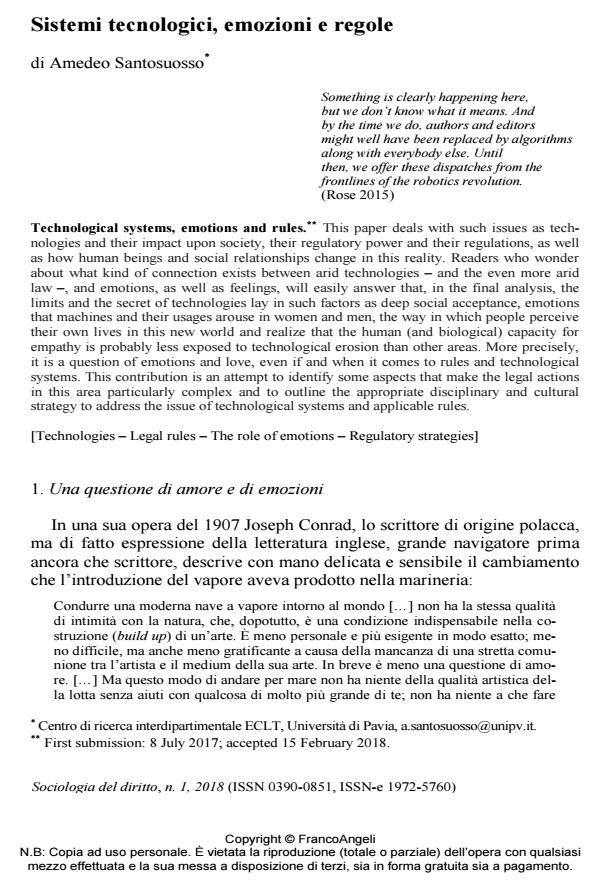Sistemi tecnologici, emozioni e regole
Titolo Rivista SOCIOLOGIA DEL DIRITTO
Autori/Curatori Amedeo Santosuosso
Anno di pubblicazione 2018 Fascicolo 2018/1
Lingua Italiano Numero pagine 24 P. 29-52 Dimensione file 314 KB
DOI 10.3280/SD2018-001002
Il DOI è il codice a barre della proprietà intellettuale: per saperne di più
clicca qui
Qui sotto puoi vedere in anteprima la prima pagina di questo articolo.
Se questo articolo ti interessa, lo puoi acquistare (e scaricare in formato pdf) seguendo le facili indicazioni per acquistare il download credit. Acquista Download Credits per scaricare questo Articolo in formato PDF

FrancoAngeli è membro della Publishers International Linking Association, Inc (PILA)associazione indipendente e non profit per facilitare (attraverso i servizi tecnologici implementati da CrossRef.org) l’accesso degli studiosi ai contenuti digitali nelle pubblicazioni professionali e scientifiche
This paper deals with such issues as technologies and their impact upon society, their regulatory power and their regulations, as well as how human beings and social relationships change in this reality. Readers who wonder about what kind of connection exists between arid technologies - and the even more arid law, and emotions, as well as feelings, will easily answer that, in the final analysis, the limits and the secret of technologies lay in such factors as deep social acceptance, emotions that machines and their usages arouse in women and men, the way in which people perceive their own lives in this new world and realize that the human (and biological) capacity for empathy is probably less exposed to technological erosion than other areas. More precisely, it is a question of emotions and love, even if and when it comes to rules and technological systems. This contribution is an attempt to identify some aspects that make the legal actions in this area particularly complex and to outline the appropriate disciplinary and cultural strategy to address the issue of technological systems and applicable rules.
Parole chiave:Technologies, Legal rules, The role of emotions, Regulatory strategies
Amedeo Santosuosso, Sistemi tecnologici, emozioni e regole in "SOCIOLOGIA DEL DIRITTO " 1/2018, pp 29-52, DOI: 10.3280/SD2018-001002